
views
X
Research source
If you believe you are a maladaptive daydreamer, understand the condition and learn how to deal with it.
Understanding the Condition
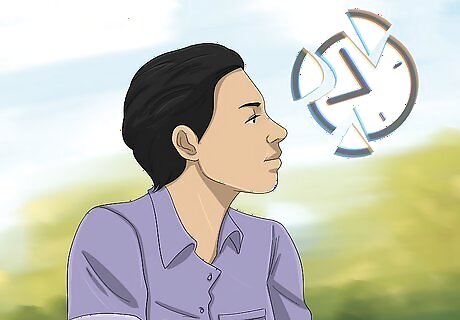
Determine if your daydreaming is maladaptive. Since most everyone daydreams, you might assume that your frequent and detailed daydreams are normal. But, if you have maladaptive daydreaming, you're probably distressed by your difficulty in controlling the daydreams. You may also be upset with how they interfere with your life, which can create a lot of shame. You might also regularly struggle to keep the daydreaming behavior hidden. The term "maladaptive daydreaming" was created in 2002, but is not yet recognized as an official condition in The Diagnostic and Statistical Manual of Mental Disorders.
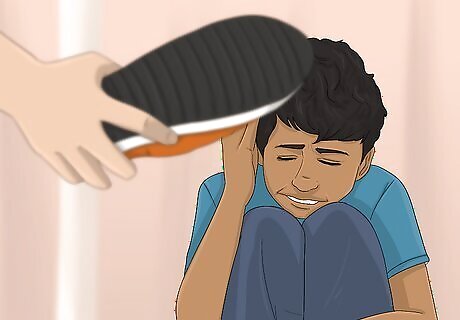
Consider abuse as a possible cause. Abuse at a young age is common in those who experience maladaptive daydreams. What starts as imaginative daydreaming becomes full-fledged escapist fantasies. The maladaptive nature of the daydreams really starts impacting sufferers in the early or pre-teen years. If you were abused and struggle with maladaptive dreaming, be sure to get help from a mental health professional. For example, what starts as simple daydreaming in a child may turn into detailed fantasies after any kind of abuse or traumatic experience begins.

Recognize traits of maladaptive daydreaming. In addition to early childhood abuse, kinesthetic elements are another shared trait. These are often repetitive movements, like tossing a ball or spinning something in your hand while daydreaming. Other traits often include: Such a strong desire to daydream that it's compared to an addiction Incredibly detailed and complex daydreams Acting out the daydreams, but understanding the difference between reality and the daydreams (unlike schizophrenics or psychotics) Difficulty in fulfilling simply daily tasks (like eating, showering, sleeping) because of the daydreams
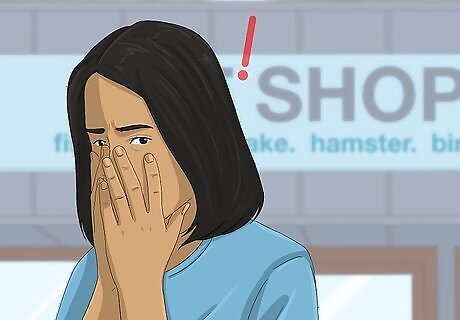
Begin to recognize and avoid triggers. A trigger is an event, place, feeling, or thought that makes you start or return to maladaptive daydreaming. Identify your daydreaming triggers. You can make notes about when you daydream, and what was happening right before. For example, you may notice that when you go into a certain room, you have some of your best daydreams or you daydream when you're bored. Be aware of your triggers and make specific plans to avoid them. For instance, if you are trying to avoid your trigger spot in the house, your plan might look like this: Do work in kitchen instead of bedroom. Get out of the house - go for a walk. Go to a coffee shop to work instead of at home.
Dealing with Maladaptive Daydreaming
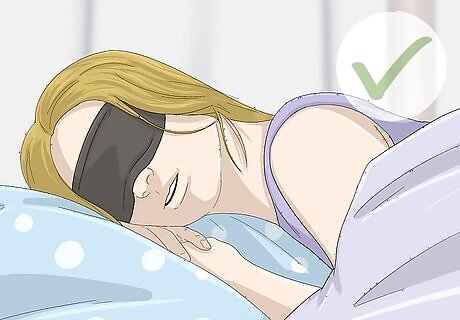
Sleep well. There are several things you can do to improve your sleep quality. Avoid caffeine or alcohol before bedtime, since these can wake you up or interfere with your sleep. You should also try to stick to a sleep schedule by going to bed and waking up at the same times each day. It may help to make a bedtime routine, like brushing your teeth, showering, and reading before bed. A routine can signal your brain that sleep is coming soon. Studies have shown that poor sleep quality or not enough leads to more frequent daydreaming. It's also been linked to impaired memory, slower reaction time, impaired attention, and intrusive daydreaming.
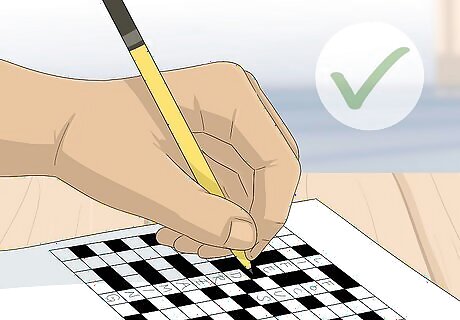
Stay engaged during the day. Keep your mind busy and mentally unavailable for daydreaming. Choose tasks that take your mental focus, like reading or crosswords. You could also engage your mind and body at the same time, like playing basketball or dancing. Or you could engage in social activities, like getting coffee with a friend or attending a local trivia event with co-workers. One theory about daydreaming says that daydreaming is a self-soothing technique, used to calm or pacify the daydreamer. In this case, try doing a self-soothing or self-care activity, like cooking dinner, doing yoga, or going with a friend for a pedicure.

Count how many times you daydream to reduce episodes. You may struggle to completely cut out daydreaming. Instead, monitor how many times you catch yourself daydreaming during a certain amount of time. Then, tell yourself to reduce this number over time. For instance, you might set the timer for 3 minutes and record how many times you caught yourself daydreaming during that time. Repeat the process until your number starts decreasing. At first, you may not be able to catch yourself at all and the timer will go off in the middle of a daydream. This is fine. Let the timer interrupt your daydreaming until you learn to monitor the behavior yourself. Setting a timer is a good form of self-monitoring which helps you take an active part in reducing daydreaming. Since it's a behavioral modification technique, the results can be long lasting.
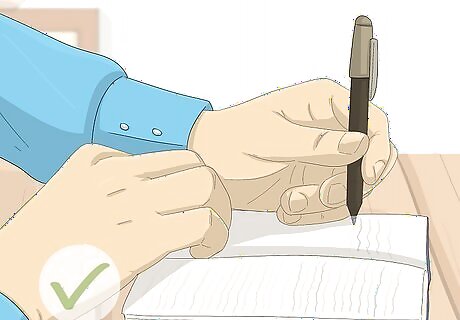
Keep a journal to help you focus. While there's little research on maladaptive dreaming and treatments, users in maladaptive online forums report that journaling helps. Journaling, writing down thoughts, can help you order your mind and keep you from slipping into daydreaming. Writing down your daydreams can help you slow down and live in the moment. Or, you can journal about how daydreaming emotionally affects you and the role it plays in your life. Although research is needed to know why journaling can help maladaptive daydreamers, journaling has been shown to slow down thought processes, allow space for self discovery, and relieve tension.

Try to make your daydreaming productive. Once you've started noticing your daydreams and what triggers them, begin to pay attention to how they make you feel. You may notice that some make you anxious or paranoid while others get you energetic or motivated. If you frequently have the same daydreams, motivating you to do something, consider working towards making the goal of the dream happen. For example, maybe your mind frequently wanders to imagine if you lived in a foreign country and held a different job. What simply seems like a daydream could become a reality if you take steps to move somewhere else and find a new job. EXPERT TIP Chloe Carmichael, PhD Chloe Carmichael, PhD Licensed Clinical Psychologist Chloe Carmichael, PhD is a Licensed Clinical Psychologist who runs a private practice in New York City. With over a decade of psychological consulting experience, Dr. Chloe specializes in relationship issues, stress management, self esteem, and career coaching. She has also instructed undergraduate courses at Long Island University and has served as adjunct faculty at the City University of New York. Dr. Chloe completed her PhD in Clinical Psychology at Long Island University in Brooklyn, New York and her clinical training at Lenox Hill Hospital and Kings County Hospital. She is accredited by the American Psychological Association and is the author of “Nervous Energy: Harness the Power of Your Anxiety” and “Dr. Chloe's 10 Commandments of Dating.” Chloe Carmichael, PhD Chloe Carmichael, PhD Licensed Clinical Psychologist Daydreaming about a specific person in your life can actually be counterproductive. When we fantasize about a person, we’re literally deluding ourselves into feeling that we’re actually spending time with them. Of course our conscious mind knows that’s not true, but there are other parts of our brain that don’t.

Consider speaking with a therapist. Since maladaptive daydreaming is not yet recognized as a condition and research on it is still in the very early stages, there are no recommended medications or treatments yet. In fact, many medical providers may not have heard of it. But, you may benefit from meeting with a therapist or psychiatrist who may be able to help you work through underlying conditions of your daydreaming. For example, if you find yourself slipping into daydreaming whenever you become stressed or irritated, you may be able to work with a therapist to develop coping strategies for stress or anger.

Search for online communities. Maladaptive daydreaming is in the early stages regarding awareness, research, and treatment. The easiest way to talk about the condition and get tips is to find websites created by users with maladaptive daydreaming. These are actually the most active in trying to understand the condition. Be sure to follow any medical developments that come from studying maladaptive daydreaming. As more studies are done, new treatments and coping mechanisms may become available.




















Comments
0 comment